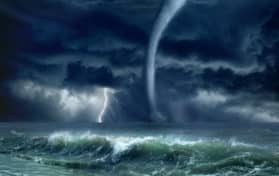
When the Climatic Research Unit’s email server was hacked in 2009, climate deniers used the published emails as “proof” that climate change was simply a hoax and nothing more. The emails belonged to prominent climate scientists and were considered to be private emails.
The quotes in the private emails were thoroughly criticized after publication. Some of them, however, were simply taken out of context in an effort to satisfy the claims of climate deniers. Some said the emails were proof of a declining temperatures and a lack of global warming trends. However, when one reads the emails in the proper context, one can see that the scientists involved were attempting to explain these phenomena rather than hide them from the public.
There is one thing for certain: nothing in the emails derails the fundamental scientific understanding of the climate system.
The content of the emails, or rather, useful excerpts of them, were released on to the blogs of climate skeptics. It is uncertain whether the emails were leaked by someone at East Anglia University in Europe or whether the emails were truly hacked and released to the public. It would appear that the emails leaked were strategically chosen to cause embarrassment for the scientists involved.
These emails were from a twelve year period in which the scientists involved discussed their research against the weather trends of the time. Five chief discoveries were made due to the emails being published;
1. Phil Jones’ comment on using a “trick” to “hide the decline” in temperatures and global warming trends was seen as an admission of attempting to fool the public
2. The scientists supposedly encouraged the editors of the Climate Research publication to resign after they published a Soon and Baliunas report.
3. Many of the scientists involved discussed how to avoid citing two studies in the IPCC Fourth Assessment Report; these studies supported some claims by climate skeptics.
4. Phil Jones repeatedly encouraged his fellow scientists to delete emails that might be demanded by climate skeptics via the Freedom of Information Act (FOIA).
5. Scientist Kevin Trenberth’s remarks regarding scientists inability to explain the lack of a warming trend.
In fact, it was Trenberth’s email stating “The fact is that we can’t account for the lack of warming at the moment and it is a travesty that we can’t” that really gave climate skeptics fuel for their fire. However, the email went on to attribute the cooling to the La Nina trend in the jet stream (something that has happened every year since the early 2000s). This is something scientists agree upon – any time it’s a “La Nina year,” global temperatures tend to stay lower.
Trenberth later went on to say that there should be a better explanation for the lack of warming other than “it’s a La Nina year.” He argued that there should be some type of tracking system that scientists could use to show a correlation between long-running La Nina patterns and climate change, even if temperatures of the earth did not continue to rise. Trenberth felt this would help to disprove any skeptical attitudes toward climate change and global warming.
However, when the emails were released, only certain portions were released. These portions appeared as if the noted scientist was saying that all climate scientists had no explanation for the decline in warming temperatures, which was not the intent of the entire email.
Further, the email comment where one scientist said there should be some “trick” scientists could use to “hide the decline” in warming temperatures came under fire by most skeptics. What the scientist actually said was in reference to a “trick” he had actually utilized. He added the real temperatures in each series for the last twenty years (from 1981 to the writing of the email) in order to show that the numbers aren’t really declining. In actuality, there was a +0.44 Celsius WRT.
What Mike had done was to create a diagram that showed a proxy reconstruction of northern hemispheric temperatures over the past 1,000 based on tree rings, which is much more dependable piece of evidence regarding global temperatures.
What we can take away is that although parts of the emails are questionable, when one reads the entire emails IN CONTEXT, it is evident that these scientists were never trying to carry out a hoax but to use scientific data to prove their claims.





